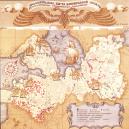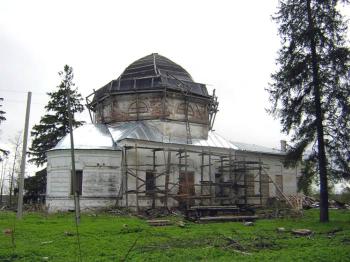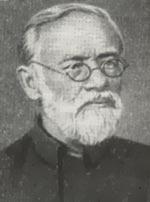Articles
/
Culture of Mounds
Culture of Mounds
Subject /
Relics
The Culture of Mounds. Mounds are high steep-side hills with the flat top and with the circle made of boulders at the foot. The area of the mound culture include basins of Ilmen Lake, the Msta, Volkhov, Luga rivers. There are mounds in the Luga, Boksitogorsk, Volkhov districts of the Leningrad Oblast. Archaeologists attribute this culture to Novgorod Slavs about which a chronicle reports : "Slavs settled near Ilmen Lake and were called with their name". Mounds are located on plots with fertile soils, it is evidence of the agricultural way of life of the population. They partly mingle with the earlier Culture of Long Barrows locating belt-across-belt with them (for examle: in the Luga River upstream region). Later the population of these zones was integrated in the Culture of Mounds. Mounds high is more then 2-2.5 m. Mounds with the high up to 5 m are prevailed. Mounds are located alone or groupped in small burial grounds which include from 2-3 to 12 embankments. Mounds are collective burial constructions that were made in two- three stage. Burials are made in the embankment at every stage. Stone-works (daises and small piles), which are sometimes connected with burials, are occurred at foots of some mounds. Mounds with compound stone facings, boulder walls, triangular form stone pavings were excavated near Staraya Ladoga Village. Such constructions are typical for king barrows of the Viking epoch in Scandinavia. The cremation of the deads was made aside. The cremation remains, collected from the funeral campfire, were put in shallow pits or on the surface ( as a single small pile or they can be scattered). Some bones were thrown into embankment when it was constructed. Animals' and birds' bones are found together with human bones. Material finds are single; there are glassbeads, bronze (spirals, trapeziform pendants, small bells, wire rings, seal-rings, horse gear decorations), iron (knives, buckles, arrow-heads, bits), bone items, modelled clay plates and dishes. These finds permit to date the mounds from the 8th-10th centuries. Settlements are presented with selishches (unfortified settlements) and small gorodishches (fortified settlements) located in the neighbourhood with burial grounds. Sizes of selishches are not large - from 120 x 30 till 150 x 60 metres. The settlement of Noviye Duboviki at the Volkhov River repids, which included the fortified cape settlement (gorodishche) and bordering selishche, was larger (300 x 200 metres). The lower lays of the early Middle Age commercial and handicraft settlement in Staraya Ladoga are connected with the Culture of Mounds. In the 19th century excavations of the Volkhov mounds were carried out by Z. Dolengo-Khodakovsky (see: Oleg's grave), N.E. Brandenburg and others. Between 1940 and the 1960s excavations were resumed by S.N. Orlov; in the 1970s V.P. Petrenko, V.A. Nazarenko and E.N. Nosov excavated the Volkhov mounds; in 1989, 1990 1997 works were gone on by D.L. Yablonik, S.L. Kuzmin. In the Luga district mounds were explored by G.S. Lebedev (at the village of Repyi, the 1970s), S.L. Kuzmin (at the village of Pristan, the 1990s). A.N. Bashenkin explored mounds in the Boksitogorsk district during the 1980s - 1990s.
Authors
Plotkin, Konstantin Moiseyevich
Persons
Bashenkin, Aleksandr Nikolayevich
Brandenburg, Nikolay Yefimovich
Dolengo-Khodakovsky, Zorian (Adam Charnotsky)
Kuzmin, Sergey Leonidovich
Lebedev, Gleb Sergeyevich
Nazarenko, Vladimir Aleksandrovich
Nosov, Yevgeny Nikolayevich
Orlov, Sergey Nikolayevich
Petrenko, Valery Petrovich
Yablonnik, Dmitry Lvovich
Geography
Leningrad Oblast, the/Boksitogorsk District
Topographical landmarks/Ilmen Lake
Leningrad Oblast, the/Luga District
Topographical landmarks/Luga River, the
Topographical landmarks/Msta River, the
Historical Toponyms/Noviye Duboviki
Leningrad Oblast, the/Luga District/Pristan Village
Leningrad Oblast, the/Luga District/Repyi Village
Leningrad Oblast, the/Volkhov District/Staraya Ladoga Village
Topographical landmarks/Verkhneye Poluzh'ye
Leningrad Oblast, the/Volkhov District
Topographical landmarks/Volkhov River, the
Topographical landmarks/Volkhov River, the
Bibliography
Спицын А.А. Сопки и жальники // Записки Русского Археологического Общества. Т. XI. Вып. 1-2. СПб., 1899
Петренко В.П. Погребальный обряд населения Северной Руси VIII-X вв. Сопки Северного Поволховья. СПб., 1994
Седов В.В. Славяне в раннем Средневековье. М. 1995., С.238-252
Subject Index
Oleg's grave, a tumulus
Mentioned in articles:
|
hidden
|
Archaeological monuments
Archaeological monuments of the Leningrad Oblast are settlements, grads, burial grounds, religious objects and other material trails of the past. Settling the oblast territory took place during the Mesolithic period. The age of the most ancient... more
|
|
|
|
hidden
|
Commission for the Archaeologic Research of the Leningrad Oblast
The Commission for the Archaeologic Research of the Leningrad Oblast. In 1919 the Russian Academy of the Material Culture History (RAIMK, later GAIMK) was esatblished in Petrograd. It was the predecessor of the conteporary centres of the Russian... more
|
|
|
hidden
|
Ozeryovo, village
OZERYOVO, a village in Boksitogorsk District. Located on the left bank of the Chagoda River that floods at that point forming a kind of lake (origin of the village’s name.) Population: 22. The Zabelino-Krasnaya Rechka motor road extends close to O.,... more
|
|
|
|
hidden
|
Spitsin, Aleksandr Andreyevich (1858-1931), a scientist
Spitsin, Aleksandr Andreyevich (1858-1931), an archaeologist, Corresponding Member of the Academy of Scienses (1927). He graduated from the St. Petersburg University in 1882. From 1892 Spitsin worked at the Archaeology Committee (the Committee was... more
|
|
|
|







